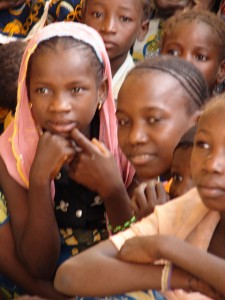As the global population surpasses 7 billion people sometime around the end of October, addressing the challenges associated with a still-growing world population will require a two-pronged response. The combined measures of empowering women to make their own decisions about childbearing and significantly reducing global consumption of energy and natural resources would move humanity toward rather than further away from environmentally sustainable societies that meet human needs.

Roughly 4.5 billion people have been added to the world population in just the last 60 years, according to United Nations estimates, putting increased strain on the world’s ecosystems and resources. Because humans interact with their surroundings far more intensely than any other species and use vast amounts of carbon, nitrogen, water, and other resources, we are on track not only to change the global climate and deplete essential energy and other natural resources, but to wipe out thousands of plant and animal species in the coming decades. To some extent, these outcomes are now unavoidable; we’ll have to adapt to them. But in order to improve the likelihood they will not be catastrophic, we need to simultaneously work to influence the future path of population and to address the environmental and social impacts that continued population growth will have.
Earlier this year, the United Nations Population Fund (UNFPA) launched 7 Billion Actions, a campaign to highlight positive actions by individuals and organizations addressing global development challenges. By sharing these innovations in an open forum, the campaign aims to foster communication and collaboration as the planet becomes more populated and increasingly interdependent.
Addressing global population growth is not the same thing as ‘controlling population’. The most direct and immediate way to lower birth rates is to make sure that as high a proportion as possible of pregnancies are intended, by assuring that women can make their own choices about whether and when to bear a child. Simultaneously, we need to rapidly transform our energy, water, and materials consumption through greater use of conservation, efficiency, and green technologies. We shouldn’t think of these as sequential efforts—dealing with consumption first, then waiting for population dynamics to turn around—but rather as simultaneous tasks on multiple fronts.
Worldwatch recommends two main approaches to mitigate the impacts of a soaring global population:
Empower women to make their own decisions about childbearing. More than two in five pregnancies worldwide are unintended by the women who experience them, and half or more of these pregnancies result in births that spur continued population growth. Engelman has calculated that if all women had the capacity to decide for themselves when to become pregnant, average global childbearing would immediately fall below the “replacement fertility” value of slightly more than two children per woman. Population would then move onto a path leading to a peak followed by a gradual decline, possibly well before 2050. Women must be able to make their own decisions about childbearing free from fear of coercion or pressure from partners, family, and society. And they must have easy access to a range of safe, effective, and affordable contraceptive methods and the information and counseling needed to use them.
Consume fewer resources and waste less food. Humans appropriate anywhere from 24 percent to nearly 40 percent of the photosynthetic output of the planet for food and other purposes, and more than half of the planet’s accessible renewable freshwater runoff. In addition to overuse of finite resources, humans waste large quantities of food every year. According to the UN Food and Agriculture Organization, industrialized countries waste 222 million tons of food annually. If fewer resources and less food were wasted, the world would be able to feed more people and use fewer resources. With nearly 1 billon hungry people worldwide, wasting less food would also mean utilizing existing resources—not new ones—to feed them.

Danielle Nierenberg, an expert on livestock and sustainability, currently serves as Project Director of State of World 2011 for the Worldwatch Institute, a Washington, DC-based environmental think tank. Her knowledge of factory farming and its global spread and sustainable agriculture has been cited widely in the New York Times Magazine, the International Herald Tribune, the Washington Post, and
other publications.
Danielle worked for two years as a Peace Corps volunteer in the Dominican Republic. She is currently traveling across Africa looking at innovations that are working to alleviate hunger and poverty and blogging everyday at Worldwatch Institute’s Nourishing the Planet. She has a regular column with the Mail & Guardian, the Kansas City Star, and the Huffington Post and her writing was been featured in newspapers across Africa including the Cape Town Argus, the Zambia Daily Mail, Coast Week (Kenya), and other African publications. She holds an M.S. in agriculture, food, and environment from Tufts University and a B.A. in environmental policy from Monmouth College.








